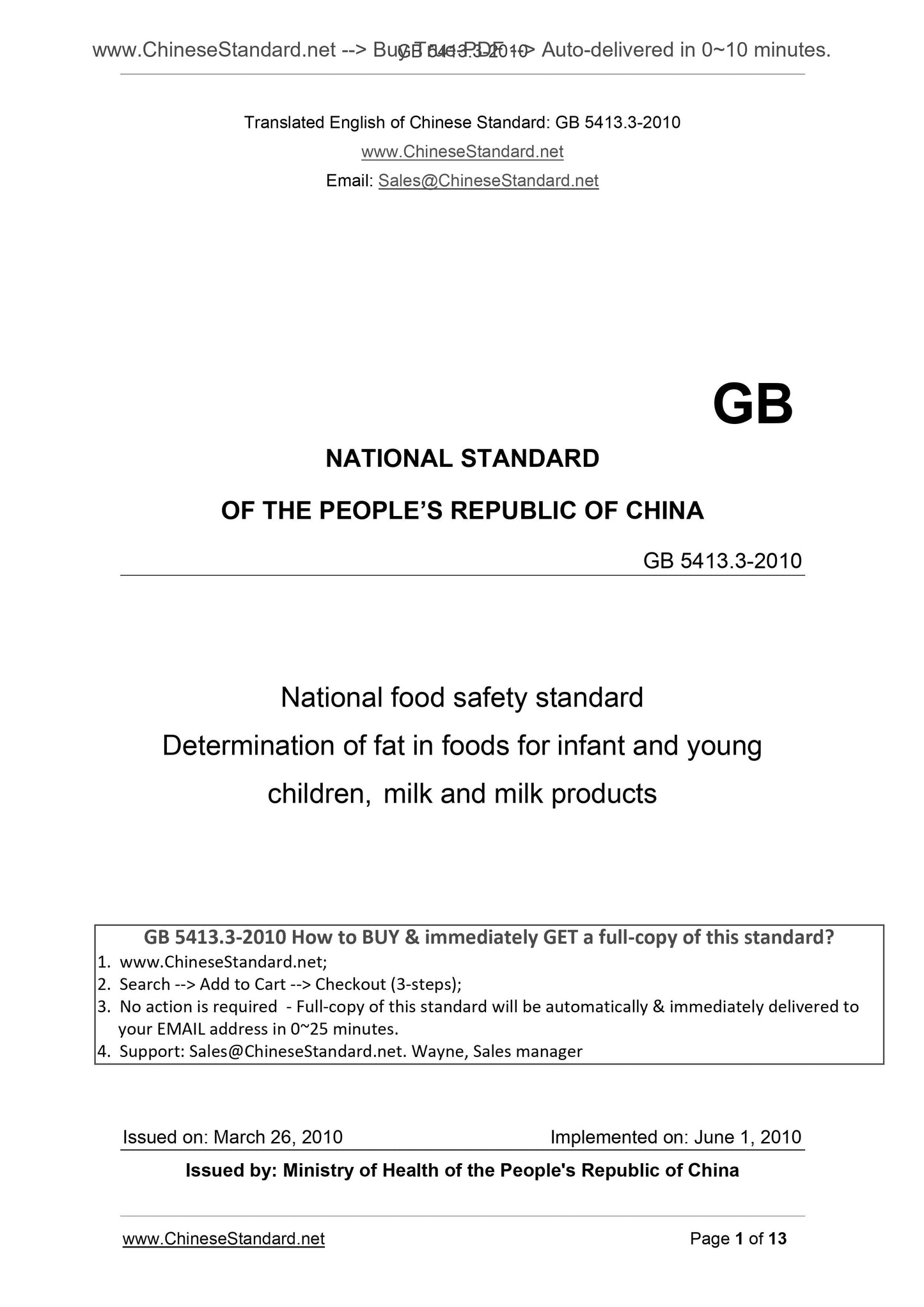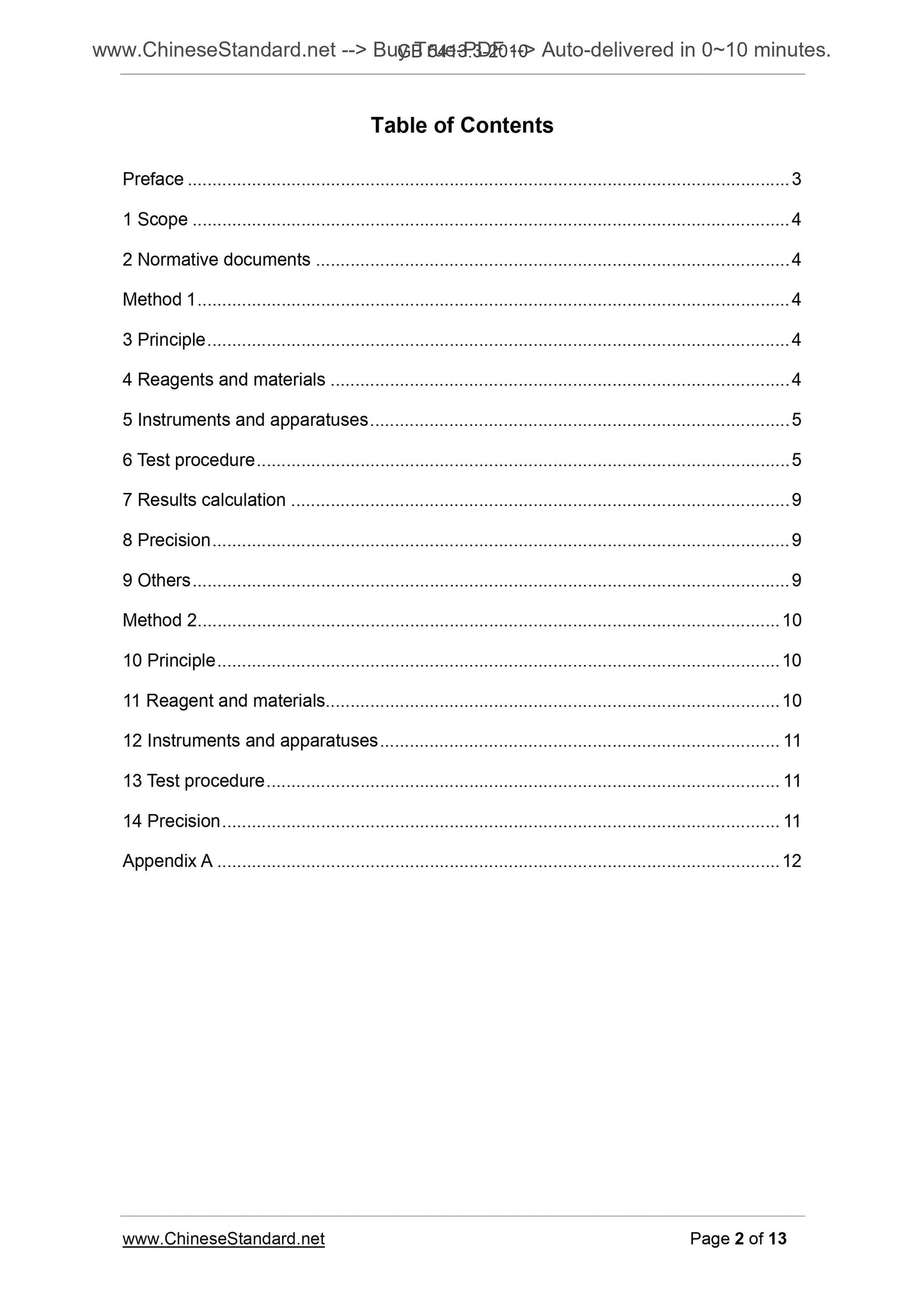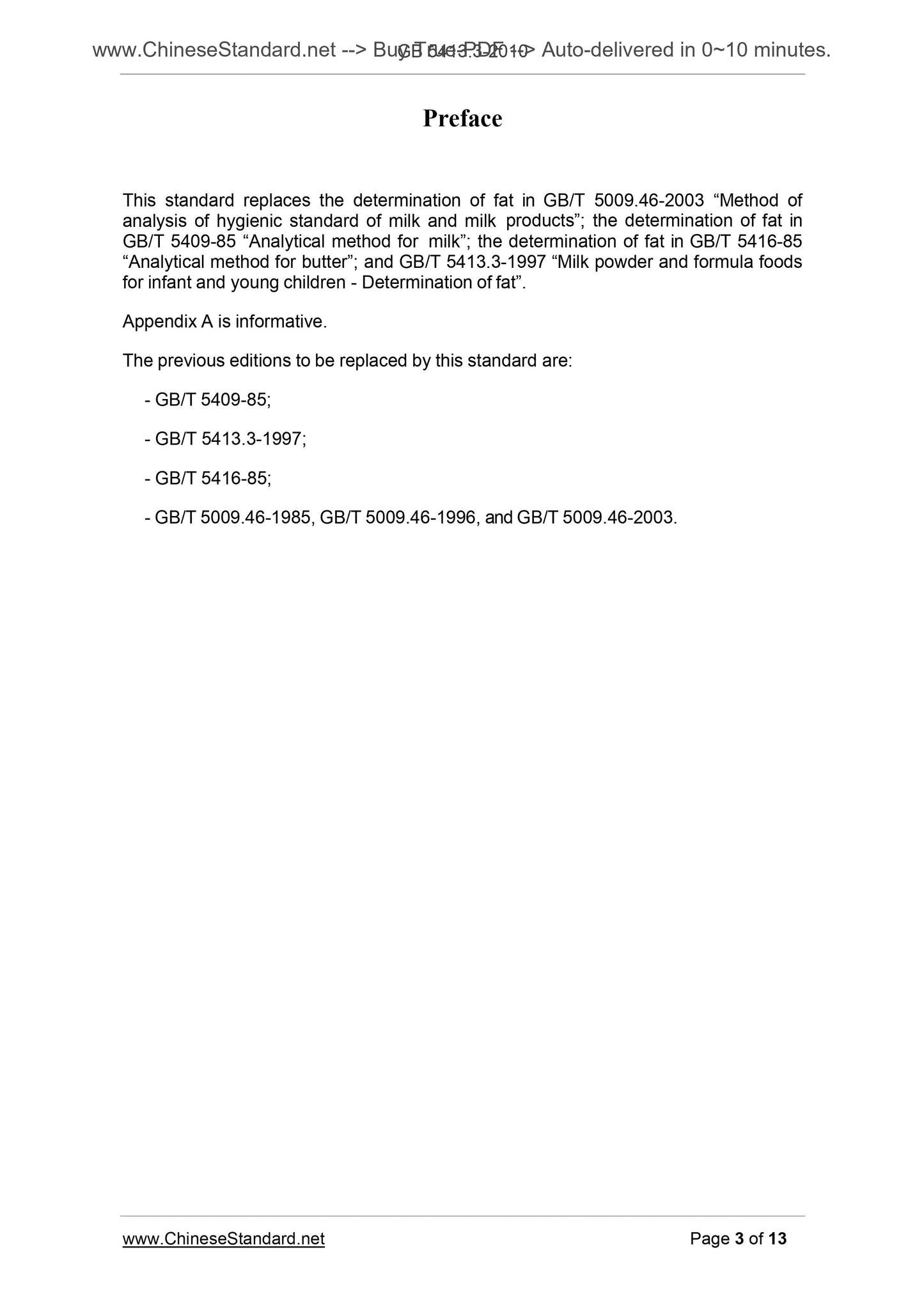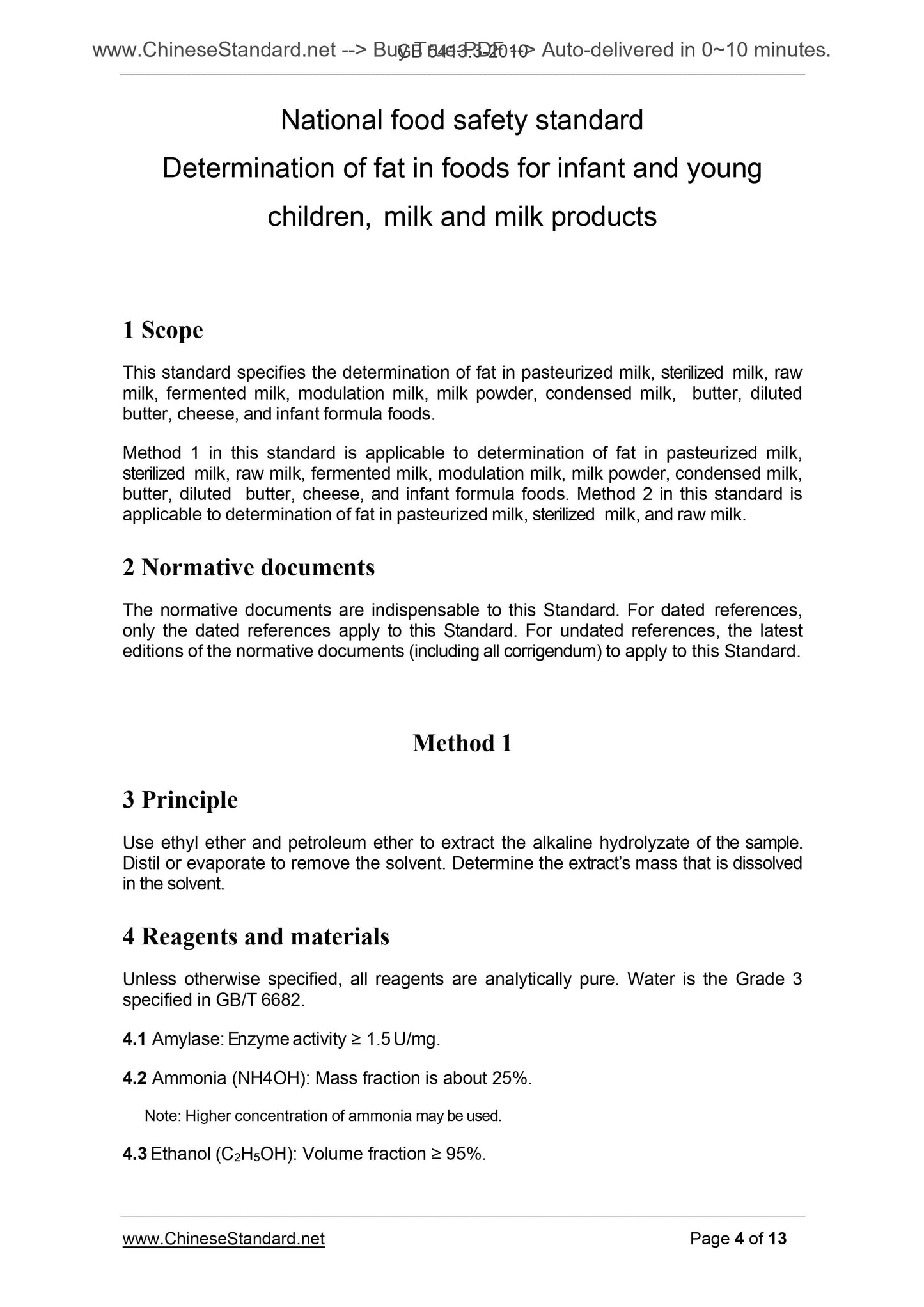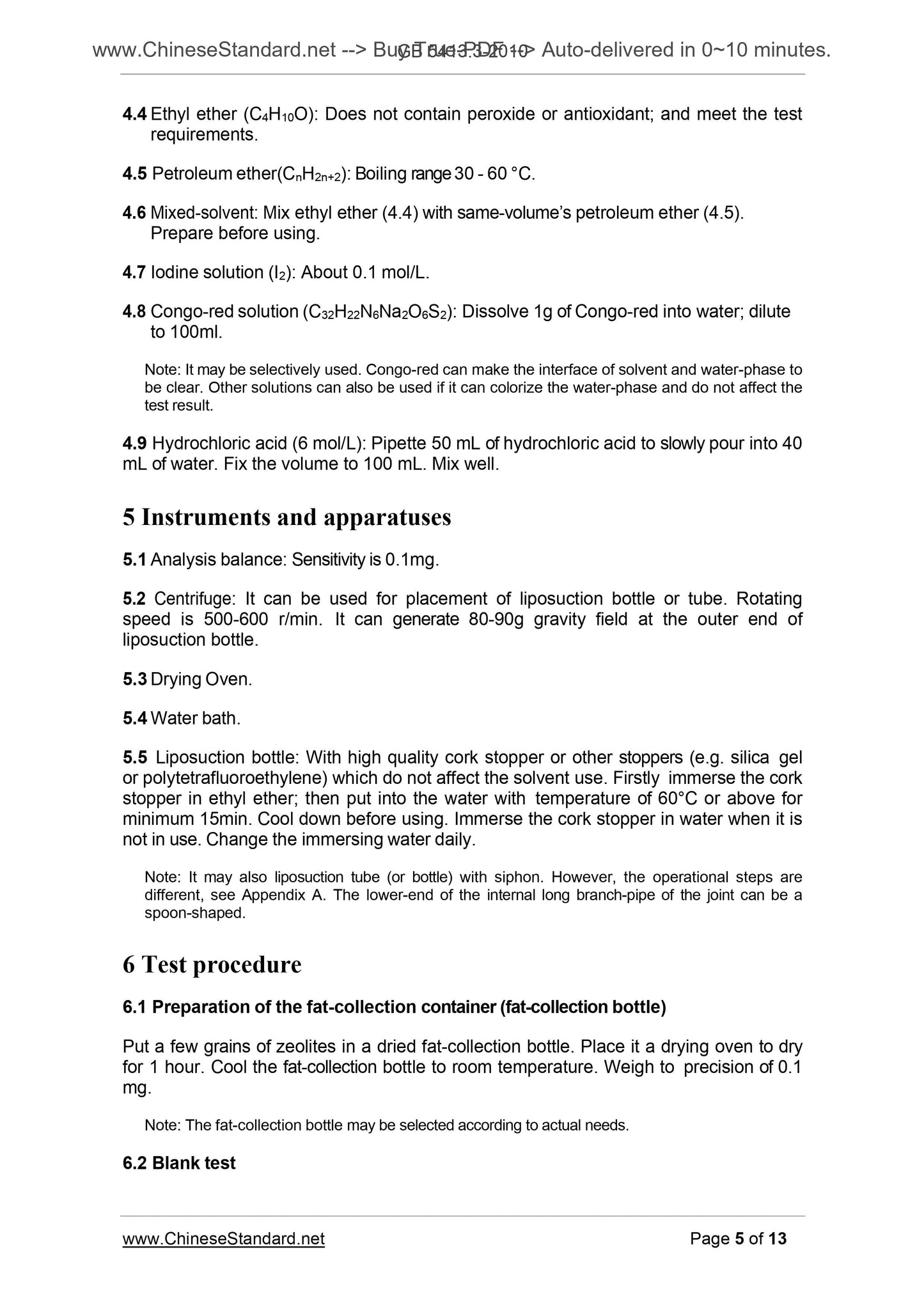1
/
of
5
www.ChineseStandard.us -- Field Test Asia Pte. Ltd.
GB 5413.3-2010 English PDF
GB 5413.3-2010 English PDF
Regular price
$95.00
Regular price
Sale price
$95.00
Unit price
/
per
Shipping calculated at checkout.
Couldn't load pickup availability
GB 5413.3-2010: National food safety standard -- Determination of fat in foods for infants and young children, milk and milk products
Delivery: 9 seconds. Download (and Email) true-PDF + Invoice.Get Quotation: Click GB 5413.3-2010 (Self-service in 1-minute)
Newer / historical versions: GB 5413.3-2010
Preview True-PDF
Scope
This standard specifies the determination of fat in pasteurized milk, sterilized milk, rawmilk, fermented milk, modulation milk, milk powder, condensed milk, butter, diluted
butter, cheese, and infant formula foods.
Method 1 in this standard is applicable to determination of fat in pasteurized milk,
sterilized milk, raw milk, fermented milk, modulation milk, milk powder, condensed milk,
butter, diluted butter, cheese, and infant formula foods. Method 2 in this standard is
applicable to determination of fat in pasteurized milk, sterilized milk, and raw milk.
Basic Data
| Standard ID | GB 5413.3-2010 (GB5413.3-2010) |
| Description (Translated English) | National food safety standard -- Determination of fat in foods for infants and young children, milk and milk products |
| Sector / Industry | National Standard |
| Classification of Chinese Standard | C53;X82 |
| Classification of International Standard | 67.100.10 |
| Word Count Estimation | 10,171 |
| Date of Issue | 2010-03-26 |
| Date of Implementation | 2010-06-01 |
| Older Standard (superseded by this standard) | GB/T 5009.46-2003 ial; GB/T 5409-1985 ial; GB/T 5416-1985 ial; GB/T 5413.3-1997 |
| Regulation (derived from) | Circular of the Ministry of Health (2010)7 |
| Issuing agency(ies) | Ministry of Health of the People's Republic of China |
| Summary | This Chinese standard specifies the pasteurized milk, sterilized milk, raw milk, fermented milk, modified milk, milk powder, condensed milk, butter, cream, cheese and infant formula Determination of fat in foods. The first method is applicable to this standard pasteurized milk, sterilized milk, raw milk, fermented milk, modified milk, milk powder, condensed milk, butter, cream, cheese and infant formula determination of fat, second law applies pasteurized milk, sterilized milk, milk fat determination. |
Share
